

A torque hinge has the ability to retain its angle or position even when a force is applied to it.
This website will teach you about how torque hinges are used, how to calculate moment, common applications and how to search for products. You will also discover tips for selecting the correct hinge and useful tools which do the calculations and moment graphs for you.
The video on the right shows examples of different Sugatsune torque hinges. They add extra value and functionality to equipment in a wide number of industries. For instance, holding monitors in place at fixed angles in medical and diagnostic facilities. Or holding control panels in place in manufacturing facilities.
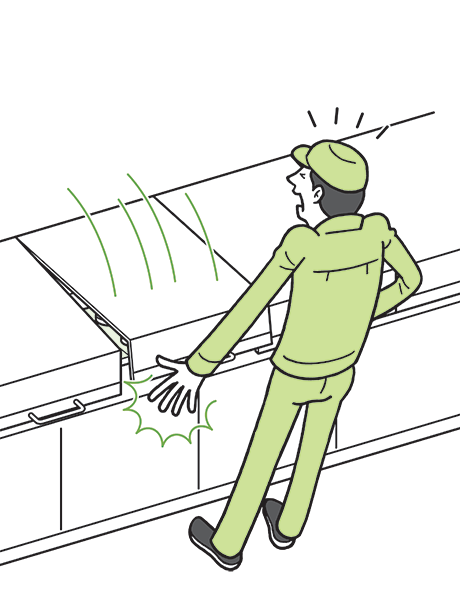
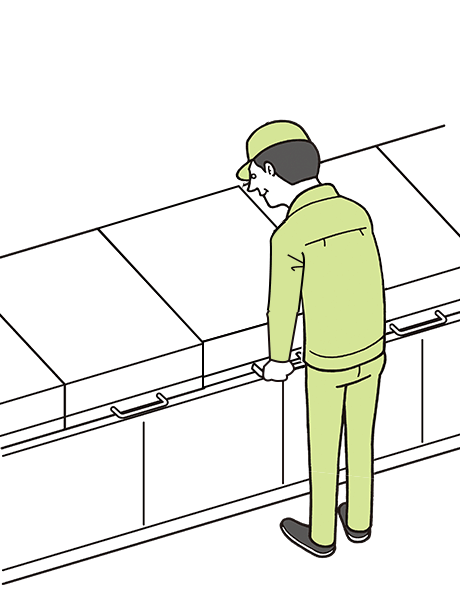
As is highlighted in the example above, torque hinges can increase worker efficiency and maintenance simplicity. By holding flaps and lids in place, workers can focus on other tasks and keep their hands free. Torque hinges reduce the risk of flaps and lids slamming shut, reducing the change of injury.
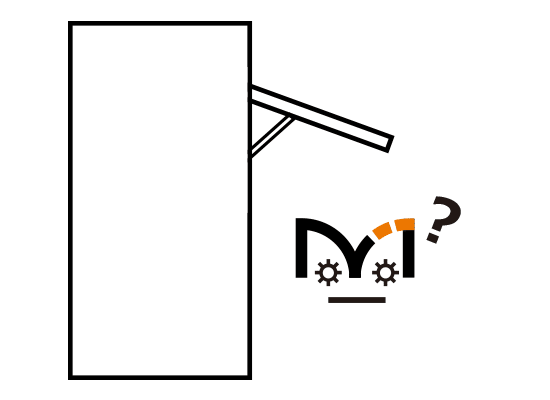
Applications need some type of stopper to hold in place
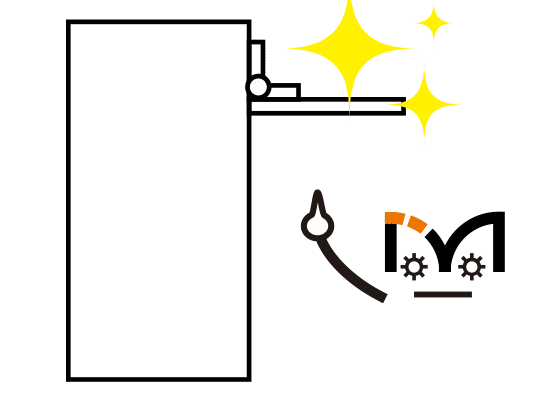
Torque hinges allow the lid or flap to Hold at any angle without any additional components
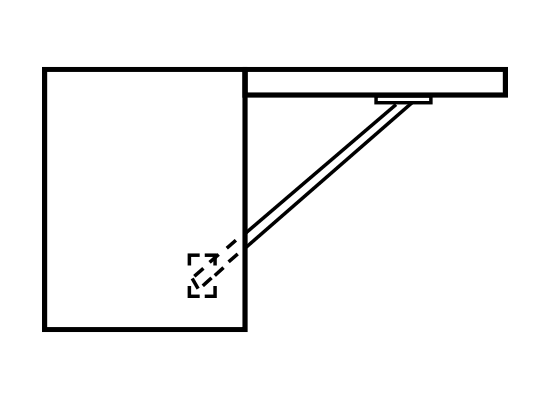
Multiple components are required.
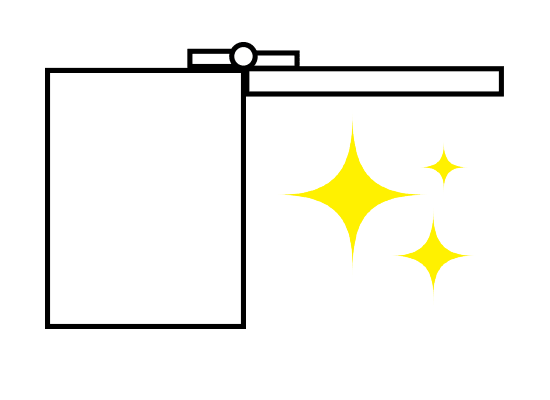
Simplified design without the need for a lid support.
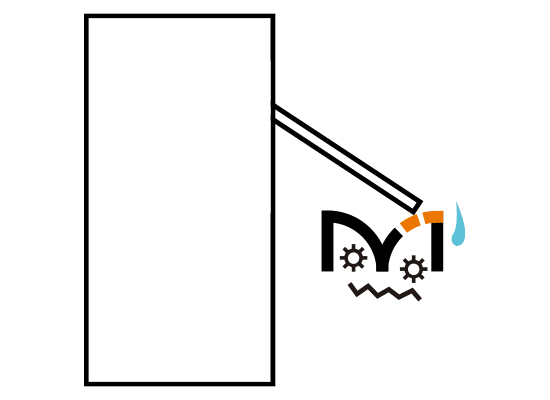
May accidentally or unintentionally close, increasing the risk of injury.
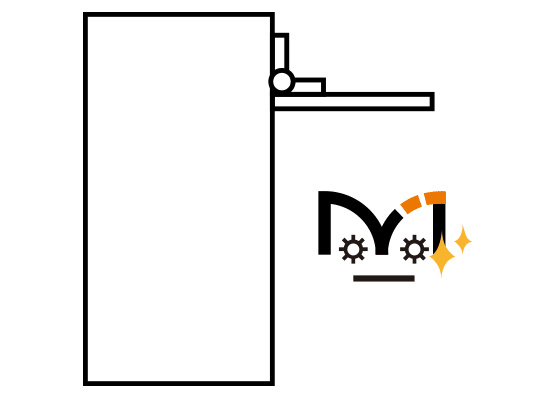
Holds in whatever position it is set at.
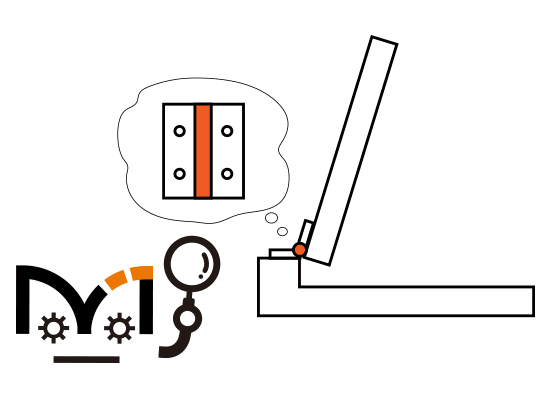
Torque hinges use friction to offer resistance to motion. Moving the flap or cover causes friction, which results in its free-stop functionality. This functionality allows it to stop at any angle without any separate stopper or extra component.
Torque hinges are frequently used for equipment covers, on position adjusting sections of monitors and on lighting fixtures. These are just some of the ways in which torque hinges are used in different industries. Below are several examples of the ways in which they are frequently used in different industries to increase efficiency, convenience, ease of use and reduce the potential for injury.
The following two examples are demonstrations of different applications of torque hinges. By clicking on the hinges, you can learn more about them
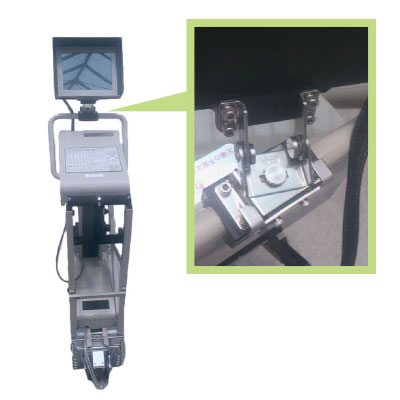
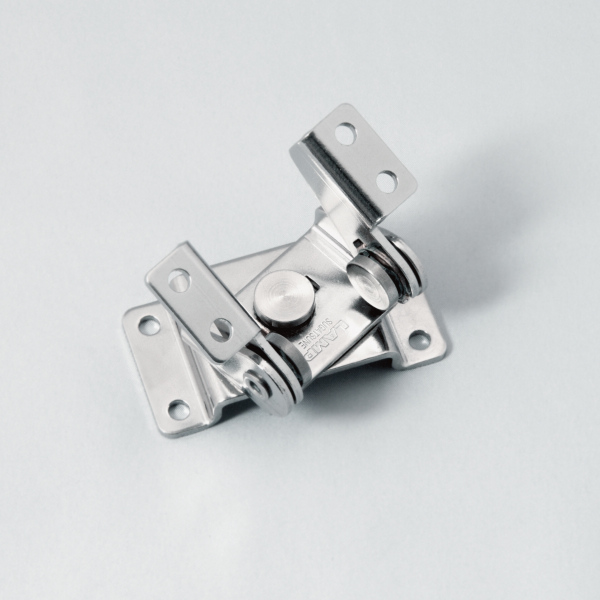
This dual axis torque hinge (360° rotation and tilt), featured in the product to left, allows users a high degree of positional freedom increasing the convenience of the product. This is particularly important for monitor displays with important information.
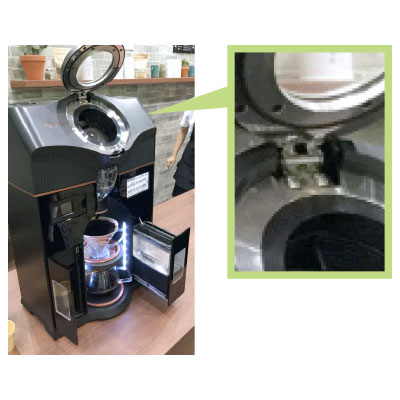
Product: Caferoid, available at http://www.caferoid.jp/
From: Nihon Dennetsu Co., Ltd.
The following are five of the most common types of torque hinge shapes in Sugatsune's product lineup. These are butt hinges, bracket hinges, concealed hinges, swivel hinges and dual axis hinges. Sugatsune also has many other types of torque hinges, including lift-off torque hinges and even piano torque hinges.
Butt hinges are the most common type of hinge. These types of hinges can be observed on all kinds of different devices, including swing open cabinets and other types of flaps that open horizontally or vertically. These are also commonly used to hold maintenance compartments open.
Bracket hinges have an "L" shape. They have thin dimensions and are frequently placed on the sides of lids, between the lids and their enclosures. They can also be combined to create different types of motion.
Concealed hinges are installed on the inside of flaps and machines. These create a clean appearance, improving the design and reducing protrusions.
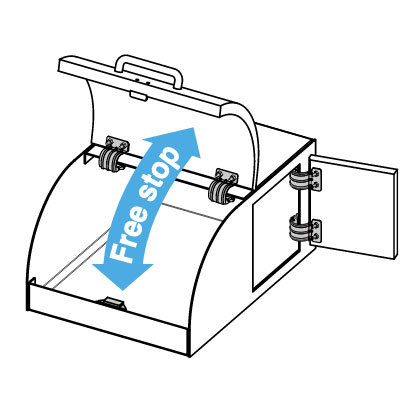
Application Example
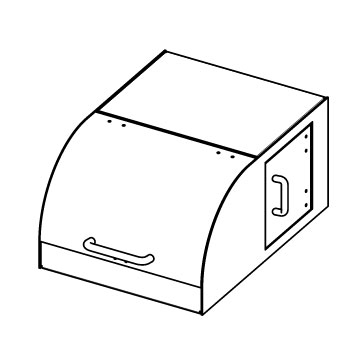
Application Example
Swivel hinges can rotate. These are often used in order to hold panels and monitors in place, especially in areas with vibration. Frequently used on control panels to control position even while buttons are being pressed while still retaining the ability to rotate.
Dual axis hinges have two different axes where torque is incorporated. This allows for more complex types of movements and designs. For instance, the HG-TMH model has two separate strengths of torque on its sides. This allows for it to be opened and closed in a predictable manner. The HG-T70S30 allows for both swivel and tilt positional adjustment in a single component.
Depending on the type, format and internal mechanisms, there can be large variations in torque strength. Further, all torque hinges have a certain amount of variability. All torque hinges operate within an expected range, this is why you will almost always see a ± symbol beside a torque hinge. Even if you do not see this symbol, there is variability. This is not unique to any manufacturer but is an inevitable byproduct of the process of creating torque hinges. This is why it is important to accurately calculate the use case in order to ensure that the hinge will work properly, even with variation.
Choosing a product that is below but close to the lower limit is important. If it is above the lower limit, the hinge is not guaranteed to provide free stop (undercompensating). If is too far below the lower limit, the lid/flap/panel/ or other movable component will become very rigid and difficult to move.
The HG-TS15 torque hinge on the right, (part of the HG-TS model), has a kgf (kilogram force) of 15.3 cm/per unit. It also has a potential +40% and a potential -20% force beside its torque measure. This means that the torque can be as much as 21.42 kgf/cm pc or as low as 12.24 kgf/cm.

Not only are there different amounts of torque, sizes and shapes, there are also different functions. Below are a few of the types of functions for different units at Sugatsune.
These hinges have friction which only activates in one direction. This feature makes opening and lifting easy while still retaining its free-stop functionality.
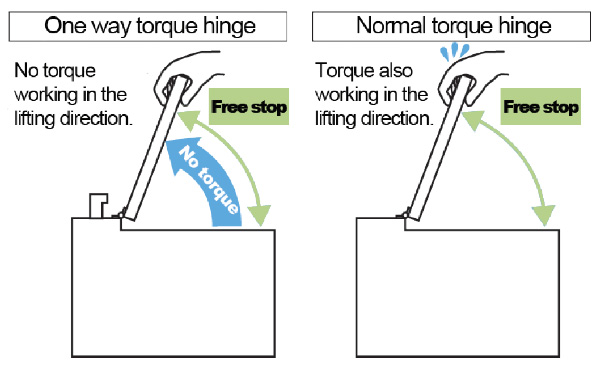
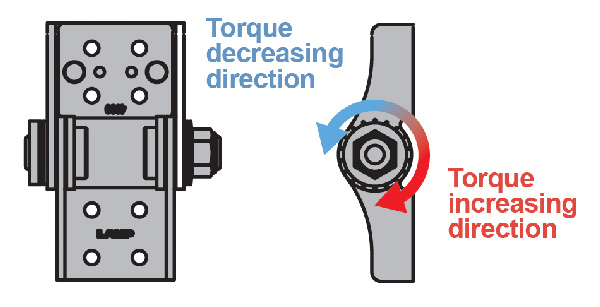
Adjustable torque hinges contain the functionality to adjust the level of torque exerted in the hinge. This can be very useful when fine tuning torque hinges to make operational feeling as ideal as possible.
Detent torque hinges are able to hold torque hinges completely closed. This protects against "spring back", an inherent property of torque hinges without a detent. "Spring back" is a phenomenon that occurs due to the presence of torque. This causes hinges to be unable to close completely.
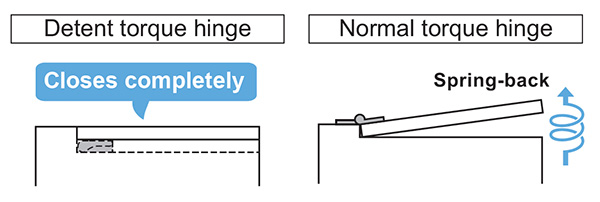
Copyright © 2025 Sugatsune Kogyo Ltd. All Rights Reserved · Sugatsune Kogyo Ltd.